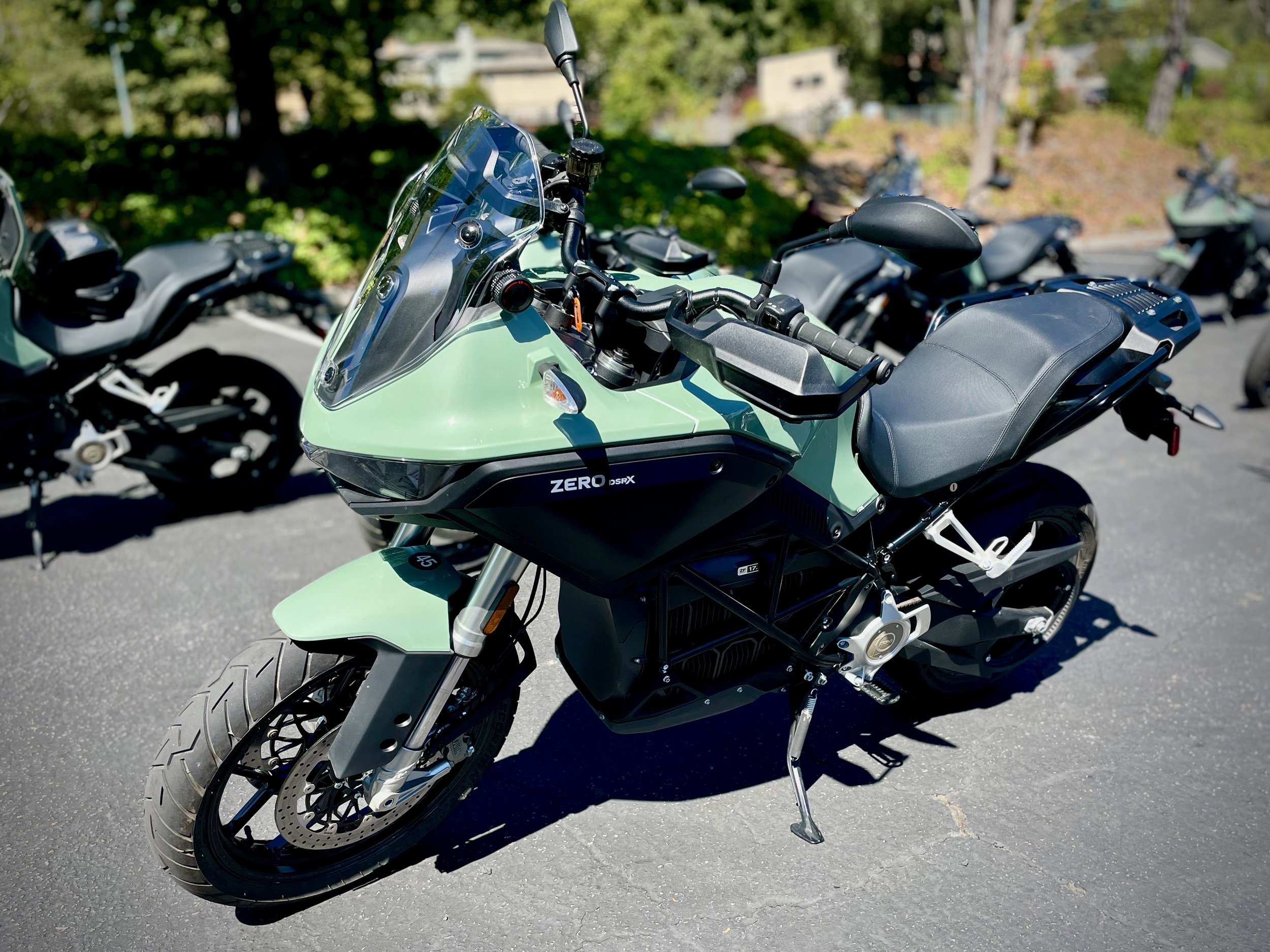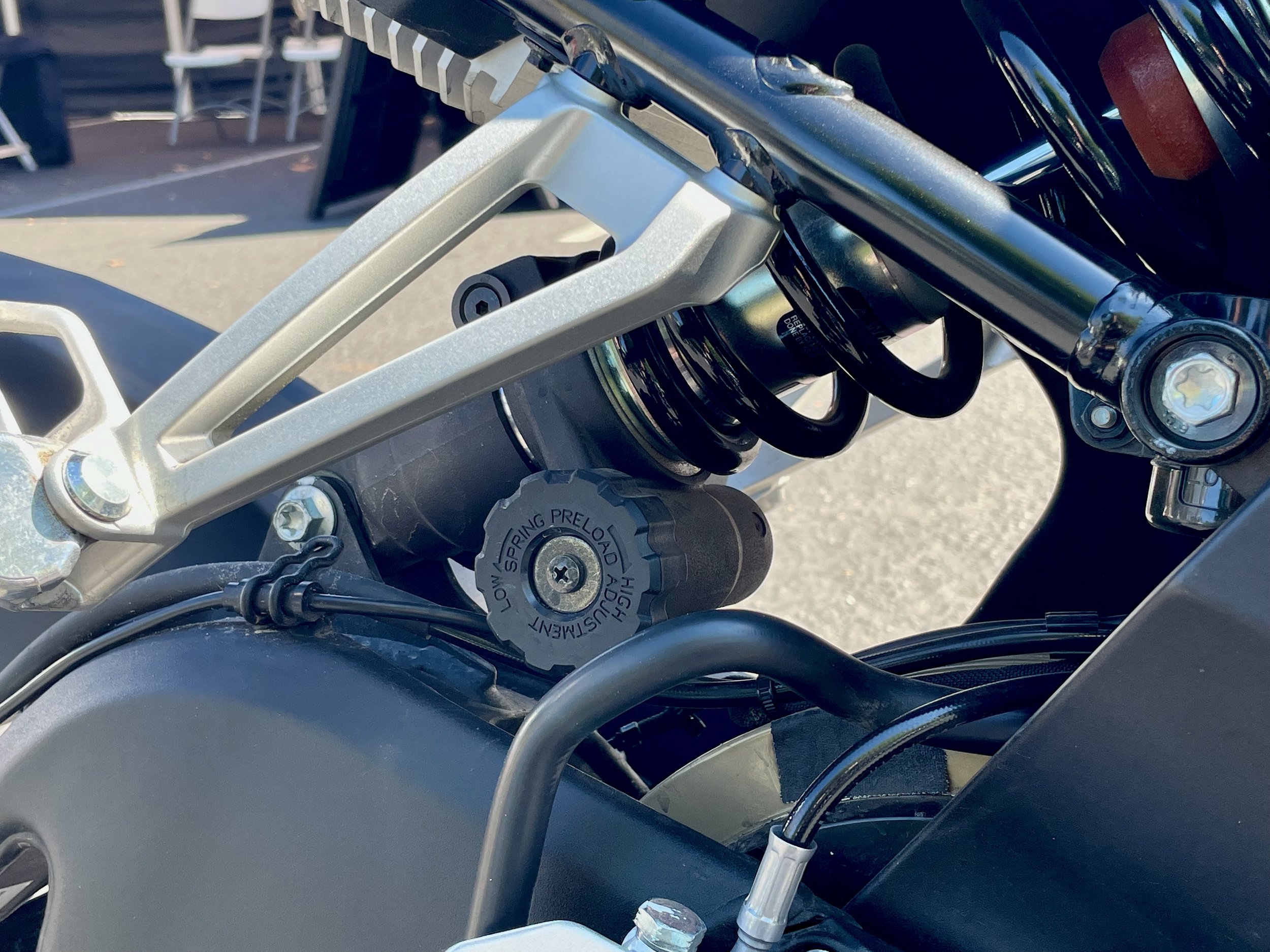(F)uneventful: Riding Zero's New Electric Adventure Bike
As Zero launches its new adventure bike, I took them up on a demo ride to see what the fuss is all about. Its been several years since my maiden voyage on one of their earlier endeavors, a 2018 Zero SR. That bike put a wide grin on my face with its 107 lb-ft of torque always at the ready. Riding the Zero was effortless and the ability to launch you forward notwithstanding, non-dramatic. It was a leap for its time. For one, it looked like a motorcycle when many didn’t and too few still do. Secondly it leant itself to urban riding quite well with its upright riding position and narrow width. Oh and 107 lb-ft, did I mention that? Heading home on my SV650 with its relatively paltry 47 lb-ft of torque had me seriously considering the SR. Honestly, the little Suzuki felt like a lot of work in comparison. But that’s in the past and the SR has grown up nicely. But what of this adventure bike?
The nicely styled DSR/X certainly looks the ADV part in proportion and scale
In With the New
When you first approach the DSR/X (can we talk about the alphabet soup nomenclature, folks?) it certainly looks the part—the upright proportions, laced wheels wrapped with Pirelli Scorpion Trail rubber and ample cage protecting the frame and bodywork. Approaching the bike, I expected some formidable heft, however at 544 lbs, the Zero is actually a bit lighter than some competitors. When it comes to hauling weight, the DSR/X beats its competitors on that front as well. With a carrying capacity 556 lbs, no one should have to leave behind any essentials. While throwing a leg over was no problem, my 30” inseam left me a bit short on each side of the 32.6” high seat. Riders my size who feel the need to flatfoot on the bike might want to select the optional shorter seat that reduces height to 31.7”. With boots on I could still use the balls of my feet to balance the machine with the standard seat. The Zero tutorial is brief. It doesn’t take much to get familiarized with the bike. A little practice with small inputs to the throttle to see how much (or little) throttle twist is required to get you on your way is sufficient. Ride modes were not discussed other than to inform us that standard mode would be used throughout the test ride.
The DSR/X carries its weight relatively low considering its ample ground clearance. While the inability to flat foot might concern some, the agility at slow speeds should make up for it. Pair that with the smooth throttle response (impressive considering there’s 166 lb-ft of torque on tap at all times) and tight, low-speed situations are easily managed. Like all electric bikes, this Zero is direct drive so there is no clutch and there is no shifter. Did I let this deter my subconscious telling my left hand to reach for the clutch lever when coming to a stop? Five times the answer was “no.” But hey, I never killed it!
Performance
Power comes on smoothly. Several times I was able to slow down to less than 30mph, crack the throttle wide open and feel what the motor had to offer—or at least what the computer would let me have. It modulated the power delivery with zero drama and plenty of acceleration. Zero claims a top speed of 112 for this bike though I doubt they would have been pleased had I independently verified it on a demo. There are two sounds you’ll notice on a Zero: the whir of the electric motor on acceleration, and the whizzing of the brake pads against the rotors when you actually do use them. Even without an aggressive regeneration setting, you can get by in commute conditions just fine without touching the brake lever whatsoever. That’s what you notice. But there’s also a couple things you don’t notice. On this particular California summer day, there was plenty of heat to go around, even in the hills around Zero’s Scott’s Valley HQ, but none of it was emanating from the bike. It was a welcome respite from the hot right knee I get from my Triumph Speed Twin in these conditions. The other, for us non-Harley riders, is chain noise. Given the thrum of your typical internal combustion engine, chain noise isn’t something you typically notice, but its there. On a bike as quiet as these Zeros you’d notice it, but they opted for a carbon belt drive. Not only does this add to the quietness (subtract from the noise?) but also reduces maintenance.
The Showa suspension on the DSR/X offers plenty of adjustment to acclimate the bike to a variety of terrain. Impressively, the preload is hand adjustable so you needn’t reach into your toolkit for the spanner. Traction is aided with the help of their partners at Bosch. Their Off-road Motorcycle Stability Control is there to assist you with the right amount of intervention on- or off-road. While I was only able to evaluate its on-road characteristics, the suspension soaked up dips and sharp bumps like they were in perfect comfort. Most bikes would deliver a jolt through your shoulders on these imperfections. Bosch also leant their expertise to the braking department. The DSR/X is Zero’s first bike with a linked braking system. Controlled by the integrated Bosch Advanced Stability Control System, when loss of traction is detected, properly modulated dual braking comes to the rescue. I did not push the bike hard enough to find this out for myself, but I can report that the J. Juan brakes are smooth and predictable, though initial bite was a bit soft for my liking. I prefer my brakes to communicate grip quickly, but then I spend most of my miles on asphalt at speed. That kind of response isn’t always desirable on loose surfaces. Regardless, it doesn’t take long to calibrate your fingers and brain to the plenty sufficient braking power on this bike. While J. Juan isn’t a household name in the US, the Spanish braking company supplies many top tier international race teams. You’ll find them throughout the WSBK paddock.
Bottom Line
That’s a lot of detail, but you may still be asking, “What’s the experience of electric motorcycling like?” I would describe it as a very efficient tool for the job. It will get you where you need to go in an outright hurry, the specs confirm as much. You’ve no doubt read plenty of bike reviews where the author praises a bike’s linear power delivery, or decries its lack thereof. They bemoan the heat pouring off the engine. Be careful what you wish for, these Zeros are perfectly linear, imminently tractable, and cool running. There is no throttle jerkiness, no danger of a missed shift, no bogging down from a wrongly timed shift. If you’ve spent much time behind the wheel of an electric car, it’s exactly the same, with two fewer wheels and a whole lot of wind. I read a lot of comments from folks who insist that they wouldn’t ride a bike without the exhaust noise. I think they’re either not being honest with themselves or they’re riding for reasons I can not appreciate whatsoever. Don't get me wrong, a good exhaust note is a wonderful thing, but its not the only thing—in fact its pretty far from the main thing. What solidified the contrast between electric and ICE for me was parking the Zero and hopping directly on my Speed Twin. Hitting the starter switch and hearing the engine roar to life through its excellent stock exhaust system, feeling the vibration of the 1200cc 270 degree parallel twin, modulating the clutch lever, and whacking open the throttle provided the full immersion that I have grown to love about riding a fairly powerful bike. It’s not just one thing, its the sum of the inputs. Is the Zero perfect? Actually, its pretty darn near close. To a fault.
Pricing
I also heard your other big question, “How much does this machine cost?” As of this writing, Zero is offering the DSR/X for $24,495. If you’re considering the BMW R 1250 GS, this is certainly in your price range, just a couple grand over and if you’re considering the KTM 1290 Super Adventure S, the DSR/X is a $4k premium. For that you are getting a good deal more torque and you are getting it all the time.
Range
Most of all, people want to know how far that coin is going to carry them. Zero claims it’s city range is 180 miles. That dips to 107 at a constant 55mph, and 85 at 70mph. Which begs the question for a motorcycle competing in a space where long trips are the bike’s raison d'être, “Is that far enough for me?” Unless you already live in the wilderness, I have to wonder myself. If you don’t, you’re probably going to need to plan your route well in advance and plan to top off those electrons. The aforementioned BMW is going to take you about 315 miles on average. You may well run out of energy before it does.












